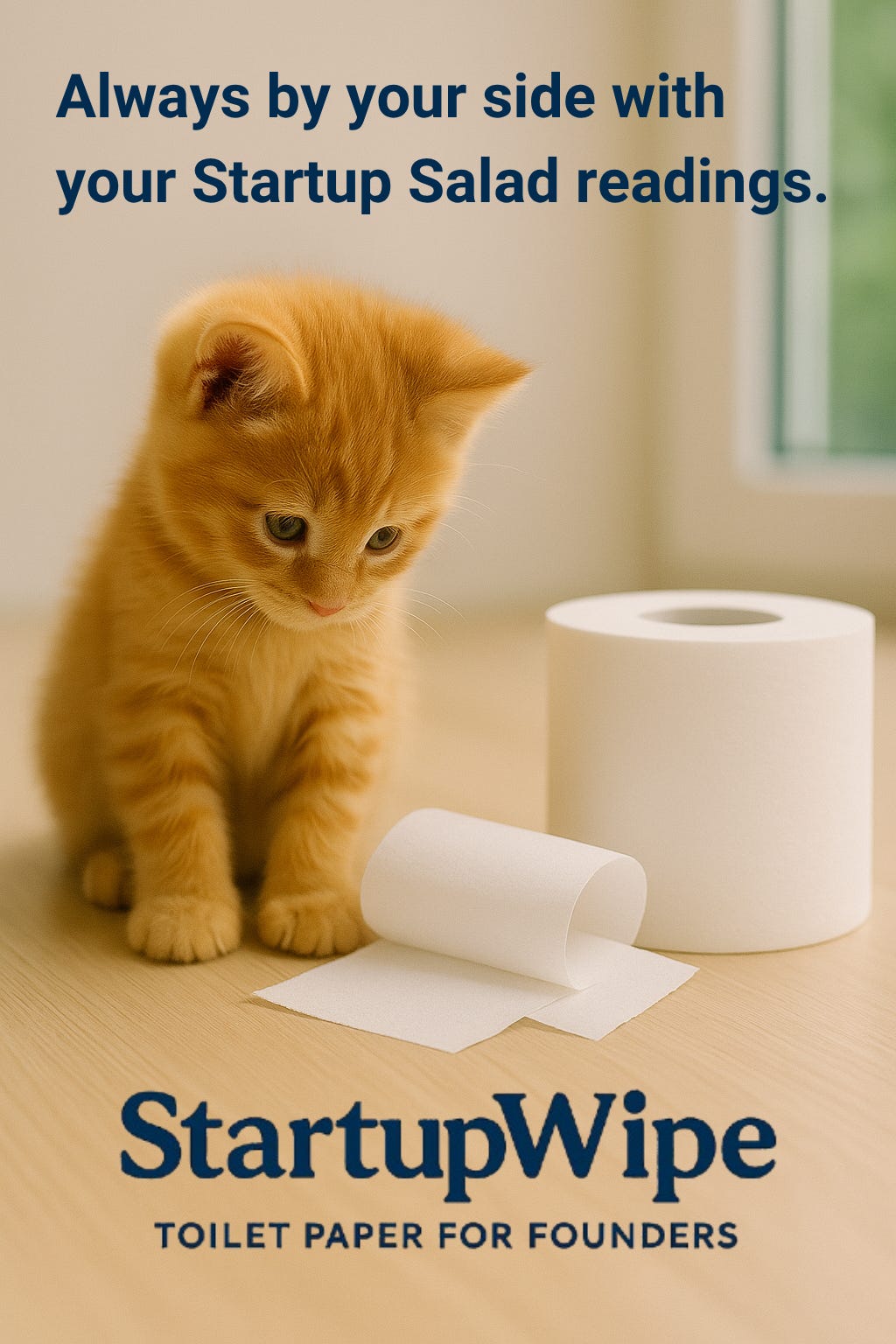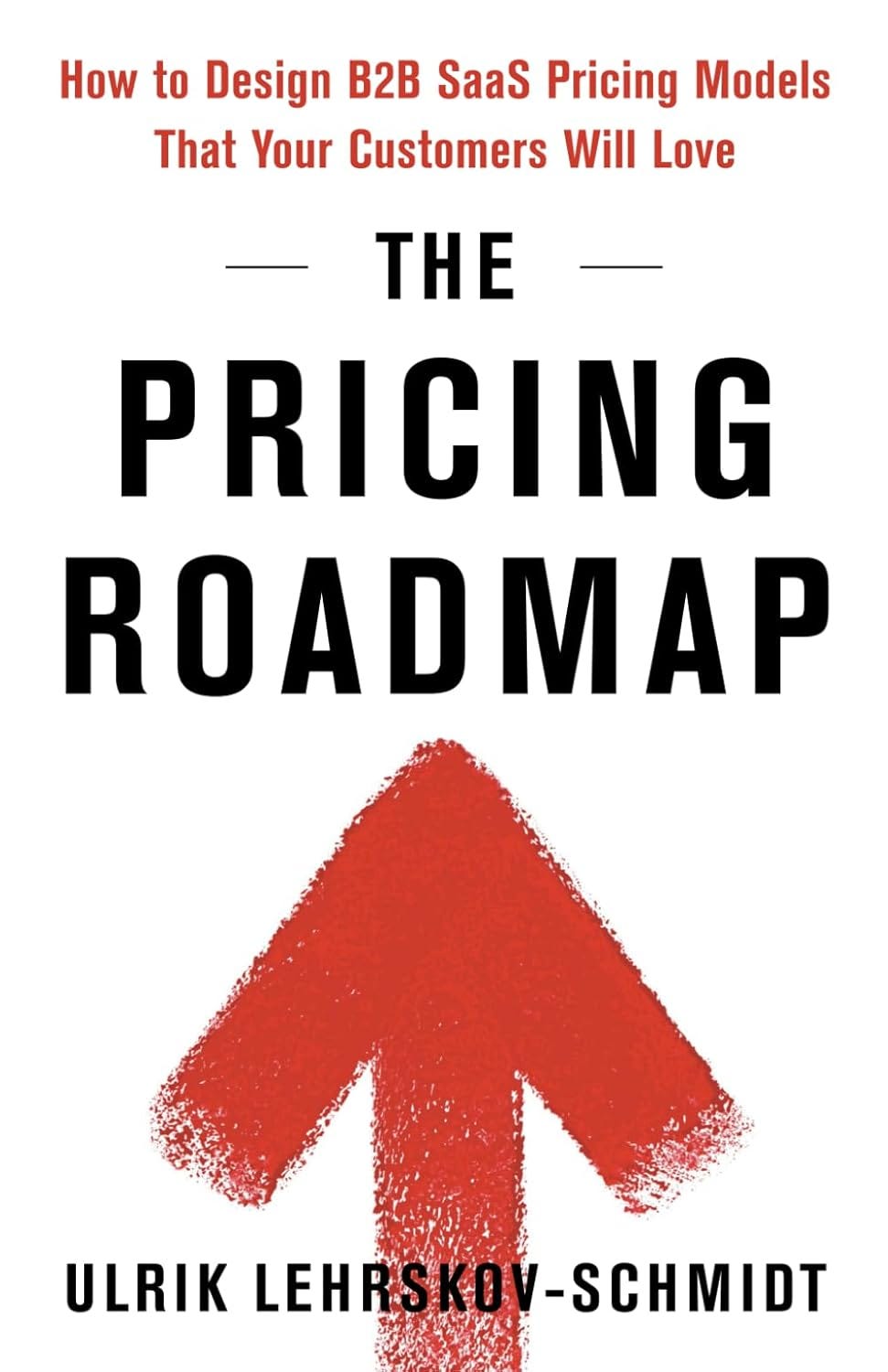Pricing: How Much Would You Sell It For?
This Friday->The Pricing Roadmap: How to Design B2B SaaS Pricing Models That Your Customers Will Love by Ulrik Lehrskov-Schmidt [5 min reading]
On Startup Salad I break down a business book’s key takeaways in a simple, digestible format, just like a good salad!
Hey, it’s Fede!
A few days ago, I was chatting with a friend of mine, a founder, who told me he priced his software by just adding a markup on top of his costs.
Ahhhh. Half a heart attack.
The thing is, it’s not entirely his fault.
Pricing is incredibly important for startups, but for some reason, I rarely hear anyone talk about it.
So today, we fix that.
But first...
I’m SUPER EXCITED to announce the VERY FIRST SPONSOR OF STARTUP SALAD:
Emh…just kidding, Startup Salad runs on pure passion.
Here comes the book:
Today's book: The Pricing Roadmap: How to Design B2B SaaS Pricing Models That Your Customers Will Love by Ulrik Lehrskov-Schmidt
Let’s be clear: this book is extremely interesting, but to make it even more plug-and-play for your startup, I’ve added a few extra tips to make it more practical.
Pssst: Every time you see a 🥗, it means the takeaway is very hot!
Too Many Founders Still Make This Mistake.
“Nobody really knows what anything should cost.”
Nice start, right?
But here’s the thing: getting your pricing right is crucial if you want your startup to grow and make real money.
So please...
Don’t just take your costs, add a 25% margin, and taac pricing is done. 🥗
Sure, it’s the easy route, but it simply won’t work.
Here’s the deal:
If you want to build a solid pricing strategy for your startup, you need to follow these 3 steps.
What They Think It Should Cost
This is basically the market research side of pricing.
And yes, it should always be done, even before your product is live.
It helps you uncover two essential things:
How much people expect to pay
How do they expect to pay (one-time, monthly, usage-based…)
These expectations are shaped by three psychological drivers: 🥗
1. Cost transparency
Can they easily guess your costs? For example, costs for a plumber: tools, hours, parts. Simple to imagine.
2. Similarity
How much are they already paying for something similar?
3. Habit
Are they used to monthly plans? Annual payments? Usage fees?
The more familiar your model feels, the easier it is to accept.
And now you can go to step 2!
Value to Customer
The more complex or innovative your product is, the harder it is for customers to understand the value or trust you.
That’s why some startups fail. Not because the product is bad, but because the market isn’t ready.
But here’s a solution:
Let’s say your product could potentially save a company 1 million per year.
You could price it at one-third or one-fourth of that.
Easy to justify. Easy to show ROI. 🥗
Cool no?
Buuuut…
Two main problems:
You might not know how much money you’re really saving the customer
If your price is too high, they might think: “We’ll just build it ourselves.”
A potential solution:
Offer a pilot at cost. 🥗
It builds trust and gives you real data on the impact you’re creating.
Then move fast toward a full contract.
Pro tip:
Stop aiming for a “simple” pricing model. Aim for an effective one.
Simple ≠ effective.
Over-simplicity kills your ability to adapt prices to different customer types.
Smart pricing lets you charge the right price to the right people.
Validate your Pricing
Once you start selling, ask yourself: 🥗
Does the price make sense based on what you know about the business?
Are customer interviews confirming it's fair?
Are you getting a good number of yeses?
(If it's too high, maybe your price is too low. If it's too low, maybe you're too expensive.)Are people willing to pay again/recommend your product?
If the answers to these questions show a positive reaction to your pricing, it could mean you made the right choices. If not, it might be time to revisit it.
Discounts: Smart, Not Constant
Discounts can help you: 🥗
Speed up early sales
Lower CAC (Customer Acquisition Cost)
Build momentum and network effects
But if you’re always discounting, it’s a sign your pricing is off.
But but but…as your audience grows, you’ll reach people less willing to pay full price.
Strategic discounts let you keep growing without killing the volume of sales.
Raising Prices: You Gotta Do It
I get it. Even the idea makes you uncomfortable.
But if you're building a SaaS, you have to do it.
Over time, you’ll add features, improve performance, and deal with rising costs and inflation. 🥗
You need to increase revenue from existing customers.
One easy move?
Launch key new features and make them available only with an upgraded plan.
Let people upgrade when they’re ready.
Simple. Smart. Sustainable.
Mistakes to Avoid
Showing up without a price
Never walk into a meeting without a clear pricing proposal.
You lose credibility instantly.Changing the price without thinking about the market
Every price change can shift your entire customer segment.
Be careful not to lose focus.Free trials that last too long 🥗
If they haven’t paid, they’re not customers, they’re users.
Long trials give you the wrong signals. A better approach?
Offer a money-back guarantee.
They pay upfront, and if they’re not happy, you refund them.
Much more effective for testing real value.
That’s it for today, I hope you enjoyed it, BIG HUG.
The guidelines you need to build your startup:
Zero to One: Why Competing Is a Trap and What Great Founders Do Differently
How to Raise Money from Family, Friends, and Fools (Without Ruining Your Life)
See you next Friday,
Federico Lorenzon











Great post. The best price on transformation.